Facts about Albania - 30 things you might not know about Albania. We travelled around Albania for almost a month in 2015 and it was a real adventure. Here you will find beautiful unspoilt beaches, affordable restaurants, friendly people and dramatic scenery. Join us!
Table of contents
Facts about Albania
If you talk to an Albanian, you can expect to be offered a drink of raki or a snack out of kindness. In the country of Albania you will find interesting Roman remains, the City of a Thousand Windows, the famous seaside resort... Ksamil and the 7th deepest lake in the world. Here are 30 facts about Albania!
1. 'Xhiro' is an Albanian tradition
Albanians are very hospitable and like to socialise. One tradition is that when you come home from work, you take a walk around the neighbourhood and catch up on what has happened, and the tradition is called xhiro.

2. Berat & Girokaster are Unesco World Heritage Sites
City of Berat has been named as the most beautiful city in Albania by the Japanese. Berat is a UNESCU World Heritage Site and is also called the city of 1000 windows. The river Osum flows through the city and there are several amazing bridges that should be seen. The city has valuable remains from the Ottoman Empire.
Gjirokastër is a city and a fortress on Mount Mali, overlooking the Drina River.

3. Albania is mountainous
Around 70 per cent of Albania is made up of mountains which gives the country a dramatically beautiful landscape. You often drive on mountain roads and then straight down to the beaches at the foot of the mountains. We drove across the Llogara National Park in the Acropolis Mountains along the Albanian Riviera, past the Llogara Pass at 1043 metres and stopped to take photos... WOW!

4. the Ura e Mesit bridge has 13 arches
This charming bridge Ura and Mesit is located in the village of Mes, north of Shkodër. It has 13 arches and the largest in the middle is 21.5 metres. The bridge was built in the 18th century to cross the river Kir.

5. "Besa" is an Albanian promise
Besa is a cultural Albanian word of honour which means to keep a promise. The word can also mean taking care of those in need and being hospitable. Besa is often considered an important Albanian tradition.

6. The currency in Albania is LEK
Do not forget that Albania has its own currency. You change or withdraw from the ATM when you arrive.

7. Albania is popular with hikers
Albania's highest mountain Korab is located on the border between Albania and North Macedonia. Adventurers come here between June and September to hike and admire the views.

8. Albania was closed for 50 years
Albania is a very young country when it comes to development. The country was closed to the outside world from 1941 to 1991 (50 years), under communist leader Enver Hoxha.
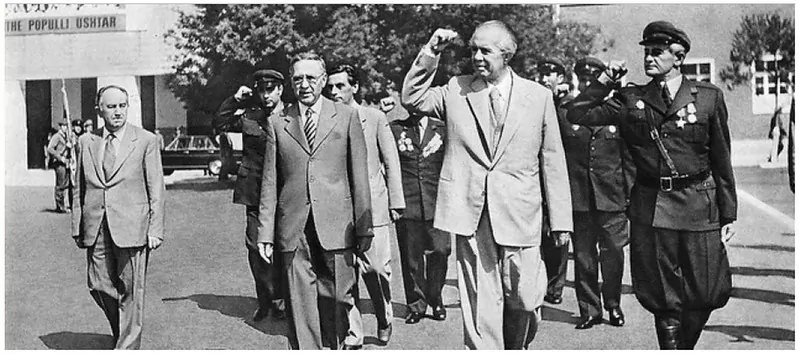
9. Shkoder rests on a legend of Rozafa
Shkoder is the fourth largest city in Albania and is located in the northern part of the country. On one of the city's hilltops, Rozafa Castle is home to a special legend.
Three brothers tried to build a castle here. They bricked all day, but every morning the mortar had crumbled during the night. A wise man told them that one of their wives must be sacrificed and walled into the castle. They decided that the wife who brought food the next day should be sacrificed, and the unfortunate fate fell on the youngest brother's wife Rozafa. She wept and asked to leave one breast exposed so that she could feed her newborn son, and an arm and a leg to cradle him. The white lime water flowing from the castle entrance is, according to legend, Rozafa's breast milk.

10. Skanderbeg is a symbol of Albania
Georg Kastriota Skanderbeg (1405-1468) from Kruja is known for his war against the Ottomans, who ruled Albania at this time. He is a great symbol of Albania as a national hero and freedom fighter.

11. Albania has 750,000 bunkers
The communist leader Enver Hoxha planned to defend the country if there would be trouble. He built 750 000 for the country's 3 million inhabitants, so there were plenty of them. Today, 160 000 are still scattered across the country.

12. Few cars during the communist era
In Albania, for 50 years 3 million inhabitants but only 3000 cars that only party leaders could own and drive. Fair? ... NOT!

13. Albania's electoral language speaks of honour
Ti Shqipëri më jep nder, më jep emrin shqipëtar is the electoral language of Albania and means "You Albania give me honour, you give me the name Albanian".

14. Mother Theresa came from an Albanian family
Mother Teresa was born 1910 - 1997 in Skopje, North Macedonia. She was an Albanian Indian Roman Catholic nun who became world famous. Mother Teresa originally came from an Albanian family named Anjezë Gonxhe Bojaxhiu. She was awarded the Nobel Peace Prize in 1979, beatified on 19 October 2003 and canonised on 4 September 2016. She has also received the Ronald Reagan Medal of Freedom in 1985, the Bharat Ratna, India's highest honour, and the Templeton Prize in 1979.
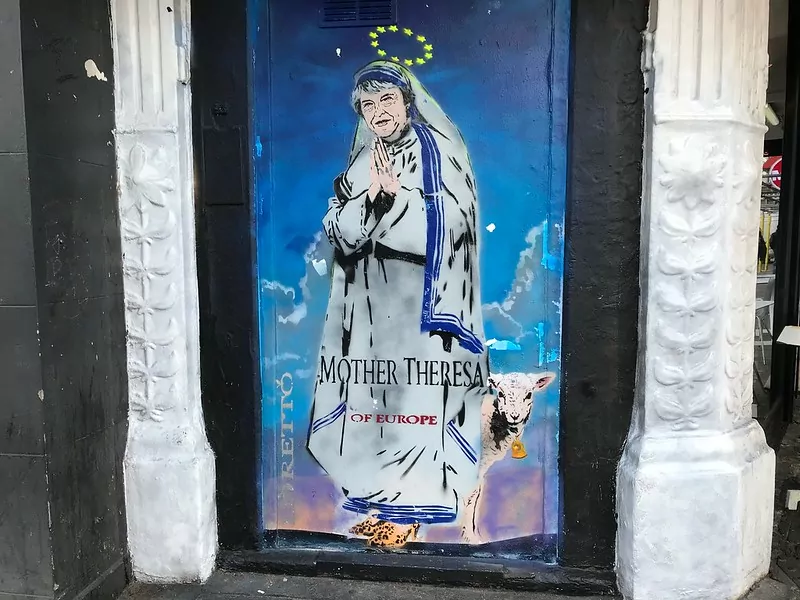
15. Albania doesn't have McDonald's - but they have Kolonat
There is no McDonald's in Tirana? What!!!? How can they survive? Well, they can, of course. Albania also has the Kolonat hamburger restaurant, which many say is remarkably similar to McDonald's, from the burgers to the packaging and logo.
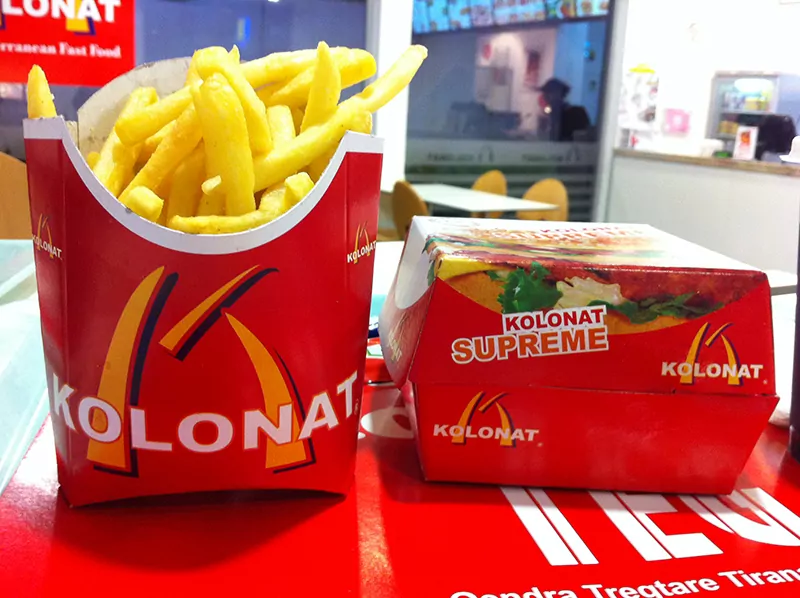
16. Tax on traffic lights
In 1995, motorists refused in the city of Shkodra to pay the newly introduced tax for traffic lights because there were no traffic lights in the city. Well, what can you say?

17. Albania helped Jews during the Second World War
During the Second World War protected Albanians 2000 Jews in a smart way. They gave them clothes and Albanian names and integrated them into their families and communities. Thumbs up for that!

18. Butrint was inhabited from around 800 BC.
UNESCO World Heritage Site Butrint in southern Albania has been inhabited since around 800 BC, almost 3000 years ago. Early tribes have been replaced by Greek, Roman, Venetian, French and Ottoman cultures, and finally Albanian. Excavations began in the 1920s and have unearthed an entire city with churches, amphitheatres, palaces and various houses. Very impressive!

19. Apollonia - a city that died
Ruins of the ancient city of Apollonia in Illyria is located 12 kilometres from Fier in central Albania. Construction of Apollonia began in 600 BC and it was home to nearly 60,000 people. Amphitheatres, avenues, sculptures, town halls and lots of history from Julius Caesar have been found here. This was an important port city and very important for trade.
In the 14th century a huge earthquake moved the coastline a full 1.6 kilometres away, causing the city to die out.

20. Many names for people from Albania
In the 100s, there was a people in Albania who were called 'Albanoi'. They are believed to have been an Illyrian people living in what is now central Albania. There is also a reference to the Arbëreshë people, which refers to Albanians in Italy who fled the Ottoman invasion of the Balkans. The Albanians' own name for Albania is Shqiperia, which roughly means 'land of eagles', hence the flag.

21. Dita e Veres is a spring festival
Dita e Veres is an Albanian spring festival. which is celebrated on 14 March, when winter ends and spring awakens. It corresponds to the spring equinox and involves families coming together to wish each other a long and happy life. The celebrations are particularly important in Elbasan and Tirana.

22. Two major dialects in Albania
When it comes to dialects Albania can be divided into two parts, north and south. Gheg (Gheg) is spoken in the north and Tosk (Tosk) in the south.

23. The Blue Eye spring is blue-green and cold.
Source Syri in Kalter (Blue Eye) or 'blue eye' is a natural phenomenon not far from Saranda - a bright blue-green spring at least 50 metres deep. You can swim in the 12.7-degree water or just enjoy the stunning scenery. The water is crystal clear and Albanians and tourists gather here for a quick dip and selfies.

24. Remains in Pogradec
The old town of Pogradec is located on Lake Ohrid., near the border with North Macedonia. There are remains from around 8600 BC. We passed Pogradec while travelling around Lake Ohrid, and we regret not stopping. Pogradec is included with Lake Ohrid as a UNESCO World Heritage Site.

25. Nobel Peace Prize to the city of Kukës
When the Kosovo war the city of Kukês in Albania received over 400 000 thousand people in need of help. In 2000, the Peace Prize was awarded to a city for the first time.

26. Përmet is considered the cleanest city.
The city of Përmet is known as the cleanest city. in Albania, sometimes called the 'city of roses'. Here you can experience spas, hot springs, the Katiu Bridge, the Vjosa River and the Fir of Hotova National Park. The city is famous for its food and wine!

27. First ever atheist state in 1967
Communist leader Enver Hoxha declared Albania the world's first atheist state in 1967, introducing state atheism instead of state religion.

28. Albania has two beautiful seas
Albania has both the Adriatic and Ionian seas as its coastline.. The nearest coastline to Corfu is only 10 kilometres away.

29. Lake Ohrid is the seventh deepest lake in the world.
Lake Ohrid, which is shared between North Macedonia and AlbaniaIt has a depth of 289 metres and is the seventh deepest in the world. The lake has 200 endemic species (own species only for Lake Ohrid) and is 2-4 million years old. The lake is a UNESCO World Heritage Site and very beautiful!

30. YES or NO in Albania?
Finally, a detail which can get you into trouble if you're not careful. When an Albanian nods ... it can sometimes mean NO! When they shake their head, it can instead mean ... hold on to your hat ... YES!


More interesting facts about Albania
- Highest mountainst in Albania is called Korab and is 2764 metres.
- The longest and largest river is Drini which is 285 km
- Albania's the second largest city is Durrës
- Biggest lake is Shkodra Lake and is the largest in the Balkans.
- Albania's two seas are the Ionian Sea and the Adriatic Sea
- Biggest sports are football and basketball
- Albania's neighbours to the south and south-east is Greece and to the east is North Macedonia. To the north-east is Kosovo and to the north is Montenegro. All of western Albania is covered by sea.
- Albania has hot summer and rainy and cool winters. There are plenty of mountains and snow can be found on the peaks during the winter. The inland areas are generally cooler and more humid than the coastal areas.
- The largest lagoon in the Mediterranean located in the Divjake-Karavasta National Park between Vlora and Durrës in western Albania.
- City of Lezhë also (Alessio or Lissus) located south of Shkoder is from 385 BC. Here Skanderbeg is buried
- Durrës is Albania's second largest city and the ancient capital founded in 627 BC. It has a large amphitheatre and several Roman remains.
Surprising facts about Albania
Were these surprising facts about Albania, or did you know everything already? Do you have any more exciting facts about Albania?
Blue Eye - "Syri i Kalter" source in Albania
The source "Syri i Kalter", Blue eye, or blue eye in Swedish is located in southern Albania, not...
Driving in Albania - on Balkan roads
What is it like to drive in Albania? It doesn't have to be difficult to drive a car in...
Lake Shkodra Resort - camping at Lake Shkodra
Lake Shkodra Resort - camping at Lake Shkodra. If you're worried about it being...
Guest blog: From Dubrovnik to Thessaloniki
Saturday and guest blog with Elisabeth Haug From Dubrovnik to Safari Beach, 16 miles. That should...
By motorhome on Albania's mountain roads
Today we continued northwards on Albania's mountain roads, from Himara to Radhima. The plan was just to move...
Saranda in Albania - 5 great excursions around Saranda
Curious about Saranda in Albania? Today we offer some tips on the lovely holiday resort of Saranda...
Camping on Lake Ohrid in Albania
Camping at Lake Ohrid in Albania. Lake Ohrid is located in eastern Albania on the border with North Macedonia, and is...
From North Macedonia to Albania by motorhome
Now we have continued our journey from North Macedonia to Albania. After the visit in Kicevo we went...
Livadhi beach, Himara in Albania - camping Moskato
Today we can tell you about the Livadhi beach at Himara in Albania and the Moskato campsite, which...
Ksamil in Albania - lovely sunshine holidays
Why not take a sun holiday in Ksamil, Albania? Ksamil is a tourist resort near Saranda with nice beaches....
Albanian meze - Many small dishes
Albanian meze - what is it? We are currently staying at a campsite in Shkodra at...
Restaurant Guvat, Ksamil in Albania
We had received the same restaurant tip from two completely independent people. So we were "forced" to try...
Is it safe to travel in Albania?
When travelling in Albania, we get a lot of questions. Many are curious about the country and...
Major cities and motorways in Albania
Today we have experienced both big cities and motorways in Albania. We have travelled from...
Food in Albania - 22 Albanian specialities
Food in Albania, what does it taste like? And what does Albanian food mean? We have travelled by motorhome...
Motorhome parking in Albania - Radhima on the west coast
Now we have found a modern caravan site in Albania at Radhima. We have written a...
Butrint - an archaeological site in Albania
Butrint is an archaeological site in southern Albania. The city was inhabited for about 3000 years, and...
Beautiful northern Albania - Shkoder and Lake Shkoder
Now we are just about ready to leave northern Albania with Shkoder and Lake Shkoder and head north,...
Albania's beaches - 14 beautiful beaches in Albania
Albania's beaches! Today we're featuring lots of beautiful beaches in Albania, including our own favourite Bunec...
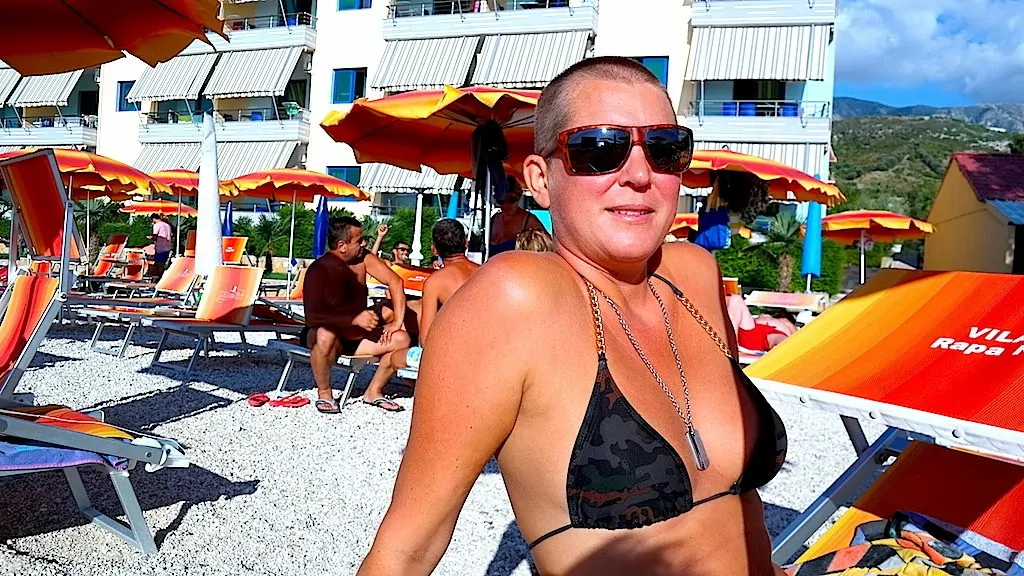
Facts about Albania
- What country? Albania (Republic)
- Residents? 2.8 million (2017)
- Capital city? Tirana, More than 420,000 inhabitants (2017)
- Currency? Leakage (ALL)
- Members of the EU? No (Candidacy since 2014)
- Members of NATO? 1 April 2009
- Time difference? None
- Country number? 355
- National Day? 28 November
- National bird? Golden eagle
- Religion? Islam (57 %), Christians and others
- Language? Albanian (many also speak Italian, English or other languages).
- Flag? The flag of Albania consists of a double-headed black eagle on a red background. The flag became official on 7 April 1992 and is called Flamuri i Shqipërisë (flag of Albania) by the population.
- National anthem? Himni i Flamurit (Hymn to the flag)
- Emergency number? Police number 129, ambulance number 127 and emergency services number 128.
- El? Like Sweden
- Water? A bit unclear, but it may be safest to buy bottled drinking water. Pure spring water is available in some places!
- Price point? Cheap (much cheaper than Sweden)
- Watch out for? The roads are relatively good, but you may encounter a horse and cart or a fruit stand at any time.
- Think about? The choice in supermarkets is relatively limited, but eating in restaurants is cheap.


Historical facts about Albania
Albania's history begins with Lake Ohrid which is one of the oldest in the world. The lake is estimated to be between 2.5-4 million years old.
The oldest signs are from Xarrë near Saranda and Dajti near Tirana. It dates from the Middle Palaeolithic period which began 2.5 million years ago to 10,000 years ago.
People settled near water for cleanliness, and fish for survival. At Pogradec, remains from 8600 BC have been found, and Apellonia with its Illyrian city in 600 BC.
The Illyrians were a people from Albania and Greece.but by 200 BC, Roman rule took over.
The Romans or Eastern Romans The empire lasted until 900, by which time the Serbs and Albanians had joined forces.
In the 12th century, the Romans had nothing left and they had their own country again. This lasted until the middle of the 14th century when the Ottomans conquered Serbia.
Albanians fought hard for over 100 yearsand also with the national hero Skanderbeg, but in 1479 the Ottoman Empire took over.
Albanians fled to southern Italy and many converted to Islam instead of death. The Ottoman people ruled Albania for 450 years from 1492-1908.
1900S
1912 the Albanians gained their independence, but not without problems.
1914 a prince was appointed to govern the country but had to leave after popular protests.
1925 When the First World War ended, the northern clan leader Ahmet Zogu took over with the help of the Serbs. He made Albania a kingdom and proclaimed himself king in 1928.
Second World War came and Italian and German troops occupied the country.
End of 1944 communist leader Enver Hoxha took over and drove out the remaining troops.
Enver Hoxha governed until 1985 when he died.
1992 the communist regime fell in many countries around Europe, including Albania. Now more parties would emerge and people would be able to vote for what they wanted.
1995 it emerged that there had been electoral fraud and a popular crisis broke out. At the same time, investment funds went bankrupt because they had invested Albanian money in pyramid schemes.
People lost their money and in March 1997 a minor civil war broke out. The Albanians have started all over again, and there is a long way to go.
More than 15 per cent live on less than SEK 20 per dayand more than 50 per cent live on agriculture.


















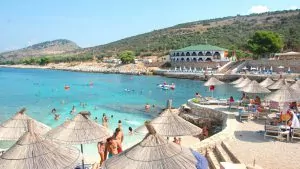













Seija Viitamäki-Carlsson says:
A wonderful country. We visited in 2017.
It's important to remember that Albania is not in the EU, so check your insurance coverage. A long way to go, but worth every mile.
06 March 2021 - 8:24
Behar Franca says:
For your information. Albania does not border Serbia, it is Kosovo ☝️.
06 March 2021 - 11:11
Peter says:
Oops!!! It must have gone fast here and I know it's Kosovo. Thanks for writing!
06 March 2021 - 15:23
M.a says:
Hello, Albania does not border Serbia but Kosovo! Please correct your text!
06 March 2021 - 13:36
Peter says:
That can happen sometimes with a huge amount of facts, and I know it's there. Have a nice weekend!
06 March 2021 - 15:25
Ruth in Virginia says:
So incredibly interesting. The country was closed for so many years,
that they didn't know anything about it, except that it was communist.
And what a long story!
The photo of the town of Berut is fascinating.
Thanks for this! Will read it again.
06 March 2021 - 14:47
bmlarstravellingblog says:
Fascinating country that we had planned to visit in 2018 when we were in Croatia. We are not allowed to drive our motorhome there with a regular driving licence, so we had planned to rent a car in Dubrovnik. Now the holiday days were not enough but the longing there is still there!
06 March 2021 - 15:53
BP says:
What an interesting and funny post. I can safely say that I knew nothing more about Albania than that the leader's name was Hoxha and that the capital is Tirana. The country was closed and there was little interest, at least on my part.
Hope that tourism will increase in this beautiful country.
06 March 2021 - 17:44
Lena - good for the soul says:
Didn't know anything about Albania until I read this. Interesting and it looks very beautiful. Andreas has been there and has spoken highly of the country.
Hug Lena
09 March 2021 - 19:22
R.R. says:
Most realistic Swedish post about Albania so far! Said by an Albanian 😉
25 July 2023 - 15:16